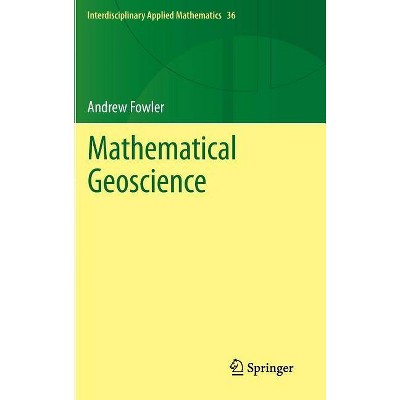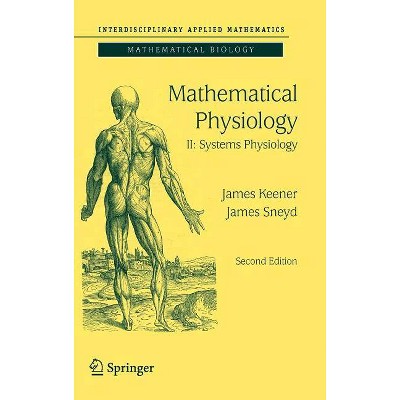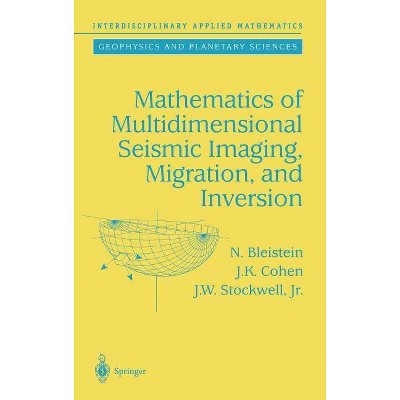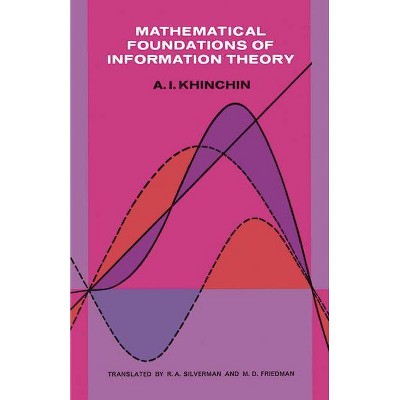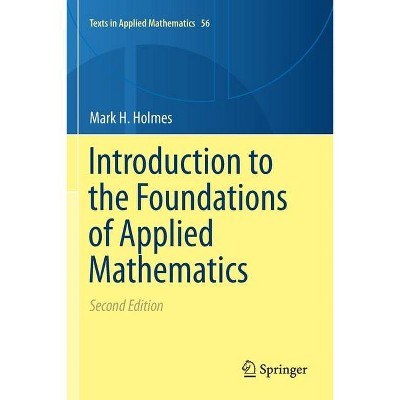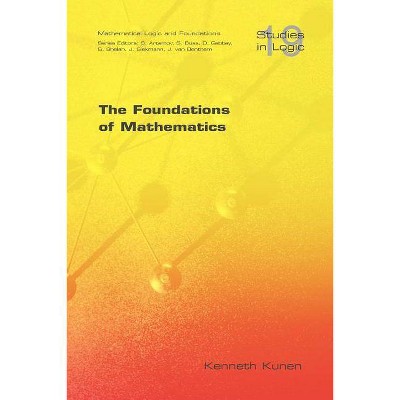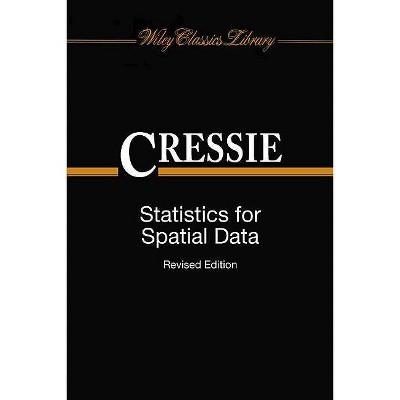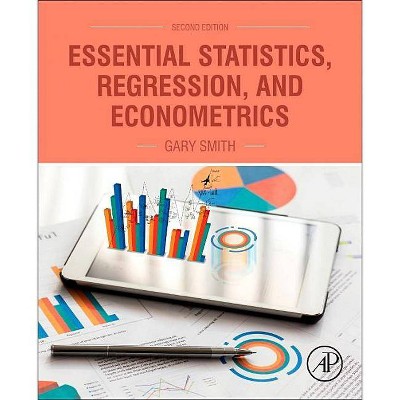Mathematical Foundations of Neuroscience - (Interdisciplinary Applied Mathematics) by G Bard Ermentrout & David H Terman (Paperback)
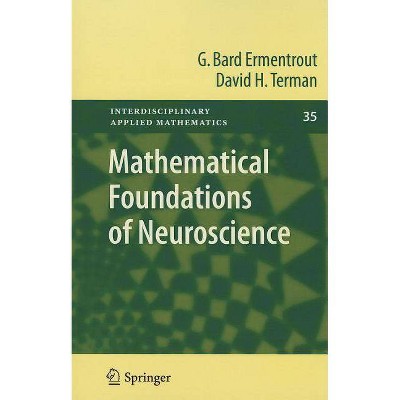
Similar Products
Products of same category from the store
AllProduct info
<p/><br></br><p><b> About the Book </b></p></br></br><p>Arising from several courses taught by the authors, this book provides a needed overview illustrating how dynamical systems and computational analysis have been used in understanding the types of models that come out of neuroscience.</p><p/><br></br><p><b> Book Synopsis </b></p></br></br>One cansay that the ?eld ofcomputationalneurosciencestarted with the 1952paper ofHodgkinandHuxleyin whichtheydescribe, throughnonlinearpartialdifferential equations, the genesis of the action potential in the giant axon of the squid. These equations and the methods that arose from this combination of modeling and - periments have since formed the basis for nearly every subsequent model for active cells.TheHodgkin-Huxleymodelandahostofsimpli?edequationsthatarederived fromit haveinspiredthedevelopmentofnewandbeautifulmathematics.Dynamical systems and computational methods are now being used to study activity patterns in a variety of neuronal systems. It is becoming increasingly recognized, by both experimentalists and theoreticians, that issues raised in neuroscience and the ma- ematical analysis of neuronal models provide unique interdisciplinary collaborative research and educational opportunities. This book is motivated by a perceived need for an overview of how dynamical systems and computational analysis have been used in understanding the types of models that come out of neuroscience. Our hope is that this will help to stimulate an increasing number of collaborations between mathematicians and other th- reticians, looking for interesting and relevant problems in applied mathematics and dynamical systems, and neuroscientists, looking for new ways to think about the biological mechanisms underlying experimental data. The book arose out of several courses that the authors have taught. One of these is a graduate course in computational neuroscience that has students from the d- ciplines of psychology, mathematics, computer science, physics, and neuroscience.<p/><br></br><p><b> From the Back Cover </b></p></br></br>This book applies methods from nonlinear dynamics to problems in neuroscience. It uses modern mathematical approaches to understand patterns of neuronal activity seen in experiments and models of neuronal behavior. The intended audience is researchers interested in applying mathematics to important problems in neuroscience, and neuroscientists who would like to understand how to create models, as well as the mathematical and computational methods for analyzing them. The authors take a very broad approach and use many different methods to solve and understand complex models of neurons and circuits. They explain and combine numerical, analytical, dynamical systems and perturbation methods to produce a modern approach to the types of model equations that arise in neuroscience. There are extensive chapters on the role of noise, multiple time scales and spatial interactions in generating complex activity patterns found in experiments. The early chapters require little more than basic calculus and some elementary differential equations and can form the core of a computational neuroscience course. Later chapters can be used as a basis for a graduate class and as a source for current research in mathematical neuroscience. The book contains a large number of illustrations, chapter summaries and hundreds of exercises which are motivated by issues that arise in biology, and involve both computation and analysis. Bard Ermentrout is Professor of Computational Biology and Professor of Mathematics at the University of Pittsburgh. David Terman is Professor of Mathematics at the Ohio State University.<p/><br></br><p><b> Review Quotes </b></p></br></br><br><p>From the reviews: </p><p>"This excellent 422 page hardcover publication is an accessible and concise monograph. ... Mathematical Foundations is a timely contribution that will prove useful to mathematics graduate students and faculty interested in the application of dynamical systems theory to cellular and systems neuroscience. ... welcome addition to the pedagogical literature. ... For mathematics graduate students who are investigating the field of computational neuroscience, I would highly recommend Mathematical Foundations of Neuroscience as their first computational neuroscience text." (Gregory D. Smith, The Mathematical Association of America, December, 2010)</p><p></p><p>"...it is a good substitute for a lengthy regime of abstract maths classes, but it is also well integrated into the field of neuroscience. Ermentrout and Terman's book conveys much of the advanced mathematics used in theoretical neuroscience today." (Vincent A. Billock, Nature)</p><p>"Gives an engaging, detailed, and truly authoritative treatment of neural dynamics ... . suited for mathematicians at the advanced undergraduate and beginning graduate level, and beyond, who wish to enter the field. ... a valuable and often-consulted text for researchers. It is also an excellent resource for instructors of intermediate to advanced courses ... . the text is very readable, even with its impressively wide scope. In addition, many subsections give short, independent reviews of mathematical topics that will be very useful in the classroom." (Kresimir Josic<b> </b>and Eric Shea-Brown, SIAM Review, Vol. 53 (3), 2011)</p><p>"This book emphasises the use of dynamical systems techniques in building and understanding models of neural cells and tissues. It has an extensive set of exercises at the end of each chapter and is ideally suited as a course text in a final-year undergraduate or first-year Ph.D. applied mathematics programme in mathematical neuroscience. ... Overall this is a unique text on the topic of mathematical neuroscience ... that fills a much-needed gap in the mathematical literature for both students and researchers." (Stephen Coombes, Mathematical Reviews, Issue 2012 a)</p><br>
Price History
Price Archive shows prices from various stores, lets you see history and find the cheapest. There is no actual sale on the website. For all support, inquiry and suggestion messages communication@pricearchive.us
